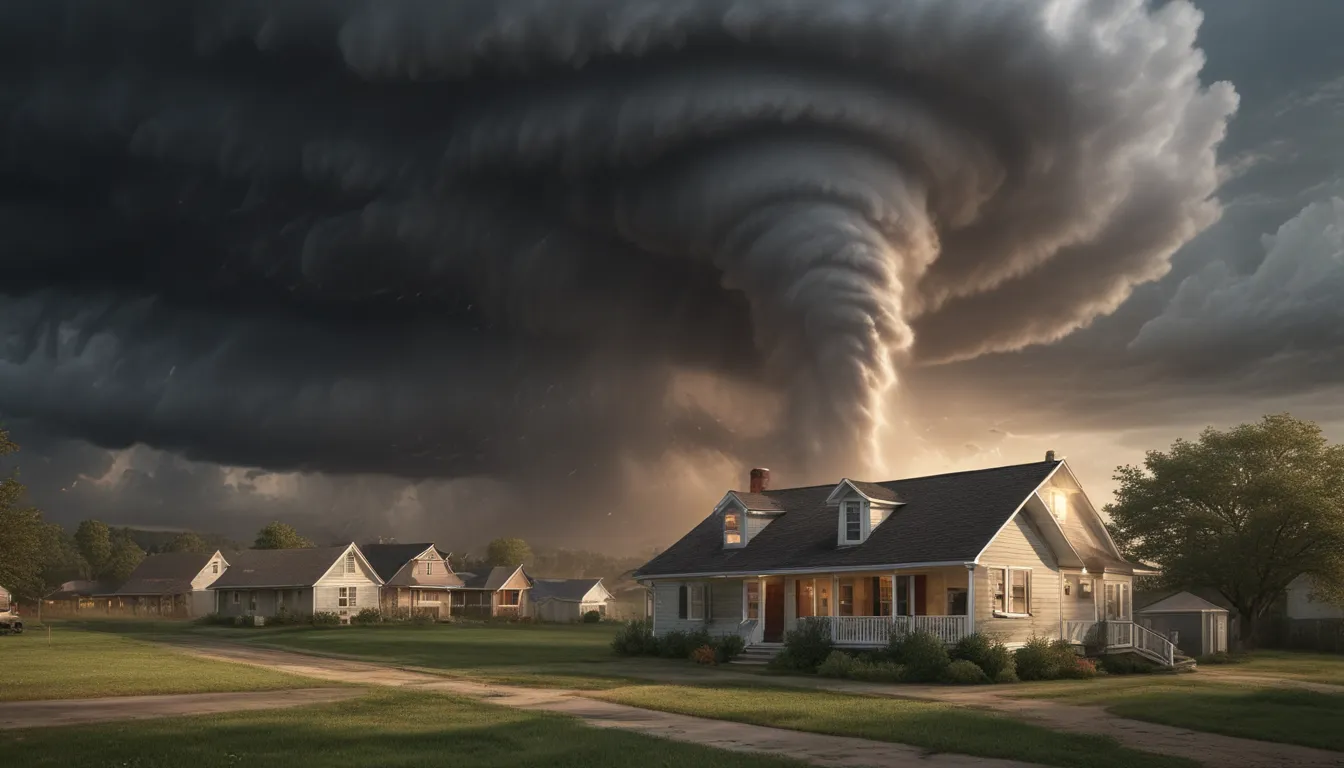A Note About Images: The images used in our articles are for illustration purposes only and may not exactly match the content. They are meant to engage readers, but the text should be relied upon for accurate information.
Welcome to a comprehensive guide on tornadoes, the powerful natural disasters that can wreak havoc in an instant. Tornadoes are among the most destructive forces of nature, capable of destroying everything in their path with their fierce winds. Despite their destructive nature, understanding tornadoes and being prepared can help minimize the risks associated with these deadly phenomena. In this article, we will delve into the fascinating world of tornadoes, exploring how they form, how to stay safe during a tornado, and some of the most powerful tornadoes in history. Let’s embark on this enlightening journey together and equip ourselves with essential knowledge to stay safe in the face of a tornado.
Unveiling the Mysteries of Tornadoes
Tornadoes are formed when cold, humid air collides with hot, warm air, creating a violent pressure differential in the atmosphere. These rapidly rotating columns of air are also known as twisters or cyclones, and they can strike with little warning, leaving a path of destruction in their wake. Tornadoes are often accompanied by thunderstorms and can take on various shapes and sizes. From rope tornadoes to cone tornadoes and even wedge tornadoes, each type has its unique characteristics and level of destructiveness.
When it comes to spotting a tornado, there are certain signs to watch out for. A change in the color of the sky, particularly a green or greenish-black hue, can indicate the imminent arrival of a tornado. Furthermore, be on the lookout for twisting dust or debris, as these are telltale signs of a tornado’s presence. Remember, being prepared and knowing what to do can make all the difference when facing this natural disaster.
Ted Fujita and the Fujita Scale: A Tool for Measuring Tornado Intensity
In 1971, the renowned Japanese-American meteorologist Ted Fujita introduced the Fujita scale, a groundbreaking tool for measuring tornado intensity based on wind speed and the resulting damage. The scale ranges from F-0 to F-5, with F-5 being the most destructive category. This scale has been instrumental in classifying tornadoes and assessing their impact on the affected areas.
Tornado Season in the United States: April to June
For those living in the United States, tornado season typically spans from April to June, with May being the peak month for tornado activity. During this period, the country experiences a significant number of tornadoes, with the potential for severe storms and twisters. It is crucial to stay informed and prepared during tornado season to ensure your safety and well-being.
The Rampage of Historic Tornadoes: Unforgettable Stories of Devastation
Throughout history, there have been several noteworthy tornado events that have left a lasting impact on communities and individuals. From the Tri-State tornado, the deadliest twister in the United States, to the Daulatpur-Saturia tornado, the worst cyclone in Bangladesh, these catastrophic events serve as stark reminders of the destructive power of tornadoes.
In more recent times, the 2011 Super Outbreak stands out as one of the most extensive and detrimental tornado events in the US, with a total of 360 tornadoes causing widespread devastation across multiple states. These historic tornado events underscore the importance of preparedness and vigilance in the face of nature’s fury.
Unveiling Tornado Diversity: From Rope Tornadoes to Waterspouts
Tornadoes come in various shapes and sizes, each with its own unique characteristics and impact on the environment. From the common rope tornadoes, which resemble thin ropes extending from the sky, to cone tornadoes with wider bases and wedge tornadoes that are among the most destructive, the diversity of tornado forms is truly fascinating.
Waterspout tornadoes, also known as over-water tornadoes, are a unique phenomenon that occurs over bodies of water, combining swirling winds, turbulent waves, and dangerous lightning strikes. These water-based tornadoes can be just as powerful and destructive as their land-based counterparts, bringing with them the same risks and challenges.
The Sounds of Tornadoes: A Rumble of Nature’s Wrath
The rumble of a tornado is often described as a continuous roar or rumble that can be likened to the sound of a nearby engine or a cascading waterfall. The intensity and pitch of this sound can vary depending on the tornado’s size, strength, and proximity to human ears. When a tornado strikes, the deafening noise it generates can be overwhelming and terrifying, serving as a stark reminder of the raw power of nature.
Tornadoes vs. Hurricanes: Distinguishing Between Nature’s Giants
While tornadoes and hurricanes both involve whirling winds and atmospheric disturbances, they are fundamentally different in terms of scale, duration, and impact. Hurricanes are massive storm systems that can span hundreds of miles and last for days or even weeks, bringing heavy rains and high winds over a broad area. In contrast, tornadoes are smaller-scale phenomena that typically last for a few hours or minutes, with more localized impacts and swift-moving winds. Understanding the differences between these two weather events is essential for being prepared and staying safe during severe weather conditions.
Tornado Safety Tips: Essential Guidelines for Survival
Staying safe during a tornado requires quick thinking and decisive action. When a tornado is imminent, seek shelter in the lowest possible level of your home, away from windows and exterior walls. Wear sturdy shoes and a helmet to protect yourself from flying debris and potential impacts. Remember, preparedness is key to surviving a tornado, so familiarize yourself with safety protocols and have a plan in place to ensure your safety and the safety of your loved ones.
Conclusion: Empowering Communities Through Knowledge and Preparedness
As we conclude our exploration of tornado facts and insights, we are reminded of the importance of awareness, preparedness, and vigilance in the face of natural disasters. By understanding how tornadoes form, what to look out for, and how to stay safe during a tornado, we can empower ourselves and our communities to weather the storm and emerge stronger on the other side. Let’s continue to educate ourselves, share knowledge, and work together to build resilient and prepared communities that can withstand the forces of nature with courage and resilience. Stay safe, stay informed, and stay prepared.






